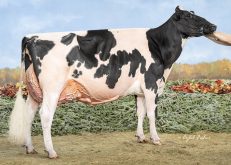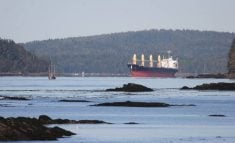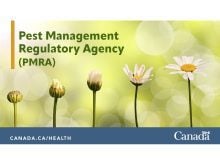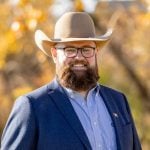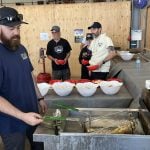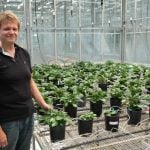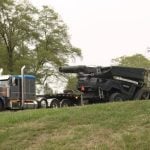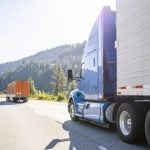EDMONTON – Organizers of one of the largest cattle shows in Alberta have shifted focus from live animals to embryos and semen.
“In the next few years embryo and semen are the only way people can move genetics from Canada,” said Colin Campbell, an Agriculture Canada marketing officer and an organizer of the Farmfair show in Edmonton.
The ongoing BSE situation has closed the United States border to live Canadian cattle so Farmfair officials hope the Canadian Genetics Exposition and Exchange will become the main showcase for Canadian genetics.
Read Also

Taking a look inside Canada’s seed regulatory overhaul
ive years, eight task teams, 130 volunteers and 135 recommendations later, Canada’s seed industry is still waiting for meaningful regulatory change.
“With live animals on display, it’s a way of bringing forth the semen and embryos,” said Campbell.
People reluctant to embrace the technology can still look at a live animal to give them confidence about their choice.
“Times are changing and the demand for proven genetics is becoming more and more pronounced.”
While few countries will accept live Canadian cattle, 77 countries still accept Canadian bull semen and 46 countries have an agreement to accept Canadian cattle embryos.
“I would suggest that even though there are indications that there’s going to be movement into the U.S. of animals, those animals are probably only going to be for slaughter.”
Campbell said it will probably be two to three years before there is export of live animals for breeding purposes. Eventually, organizers want to expand the genetics exposition to include embryos and semen from goats, sheep and horses. They would also like to have breeders from other countries offering semen and embryos for sale at the show.
“We are not naive enough to believe we are the only source of genetics in the world,” Campbell said.
Barb Dixon of Vermilion, Alta., said her family has adopted the new way to sell Shorthorn cattle. Already they have sent a first flush of embryos to Scotland, where no live cattle shipments are allowed. There is also international interest in another cow they will flush.
“I think it’s important to embrace the technology and make it work for you,” said Dixon. “It’s a way of getting genetics around the world.”
Two of the animals her son, Robert, showed at Farmfair resulted from embryo transfer technology.
“That’s the beauty. Young people embrace the technology,” said Dixon, who added that the embryo transfer work was done on their farm.
“That’s the way we’re looking at marketing our cattle.”
Frank Cholak of Lamont, Alta., said the BSE crisis has hit cattle producers hard. Farmfair is often the first show Alberta producers attend each year because of travel costs.
“It’s been hard. It’s really taking its toll. A lot of people don’t have the cash flow to go out.”
The Charolais breeder said he has had interest in his heifers from U.S. buyers. Since he can’t ship the animals live, he is willing to work with the customer to flush the embryos and ship them across the border.
Scott Loewen of Rosemary, Alta., agreed with the idea.
“Maybe the only way to get (cattle genetics) down there in the next couple years is to put them in an egg.”
Embryo transfer work is not for everyone, said Bob Prestage of Canadian Livestock Services. More management has to go into looking after the cattle when using embryo transfer.
“Selling the embryos is the easy part,” said Prestage.
Work to get the female into good reproductive shape must begin about a year before the embryo is implanted.
Recently Prestage’s company shipped 150 embryos to China but the veterinarian only implanted 19 because some of the recipient cows were in poor shape. He said he can’t believe people are still exporting live cattle when it costs $800 to ship a tank of 1,000 embryos and it costs $200,000 to ship 200 cattle in an airplane.
Geraldine Hassall of New Zealand was looking at the Charolais cattle at Farmfair on behalf of other breeders. With the New Zealand border closed to live Canadian cattle, the only animals she imports will be through semen or embryos.
“It’s the way of the future,” Hassall said.



